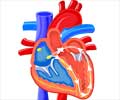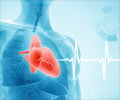
At the beginning and end of the 10-week study, the golfer completed psychological questionnaires, and researchers recorded muscle tension, respiration, and heart rate, and assessed her sport performance using virtual reality golf.
The resonance frequency of the golfer's cardiovascular system was determined.
In weekly sessions, she learned to breathe slowly, but not too deeply, to meet that frequency, and was given instructions for transferring her breathing skills to competitive sport.
By the end of the study, these efforts showed positive results. Prior to the study, the golfer's score on 18 holes of virtual reality golf was 46 strokes, while after the study she reduced her score to 30 strokes.
Her putting, driving distance, and birdie and par scores also improved. Psychologically, the golfer reported reductions in six of 11 areas of stress.
Advertisement
High heart rate variability indicates a flexible autonomic nervous system that is responsive to both internal and external stimuli, and related to fast reaction times and adaptability.
Advertisement
The article, titled 'Virtual Reality-Assisted Heart Rate Variability Biofeedback as a Strategy to Improve Golf Performance: A Case Study', has been published in the Spring 2011 issue of the journal Biofeedback.
Source-ANI














